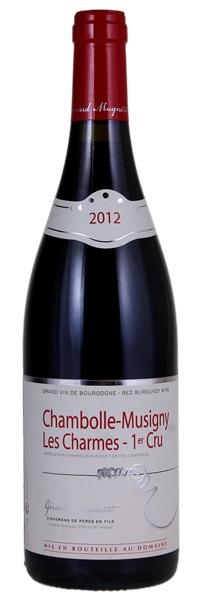Estimate

...very intriguing, slightly medicinal bouquet...palate is rounded on the entry with white pepper and dried orange peel infusing the structured black fruit...long grippy finish... This is a great Chambolle.
...classic Chambolle nose of ultra-elegant and cool essence of red berry fruit and soft spice nuances. There is a lacy and satiny mouth feel to the detailed and lightly mineral-inflected middle weight flavors that firms up and the moderately deep and persistent finish.
Scented and high toned. Very smooth and seductive. Mouthfilling and beautifully balanced...gorgeous. So long!